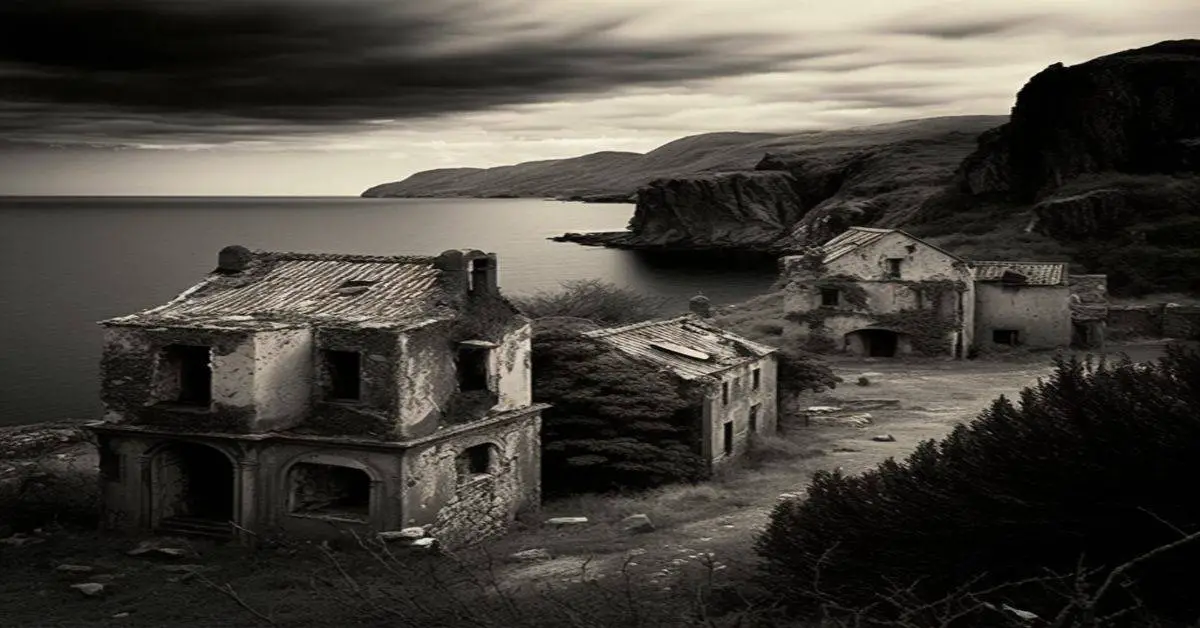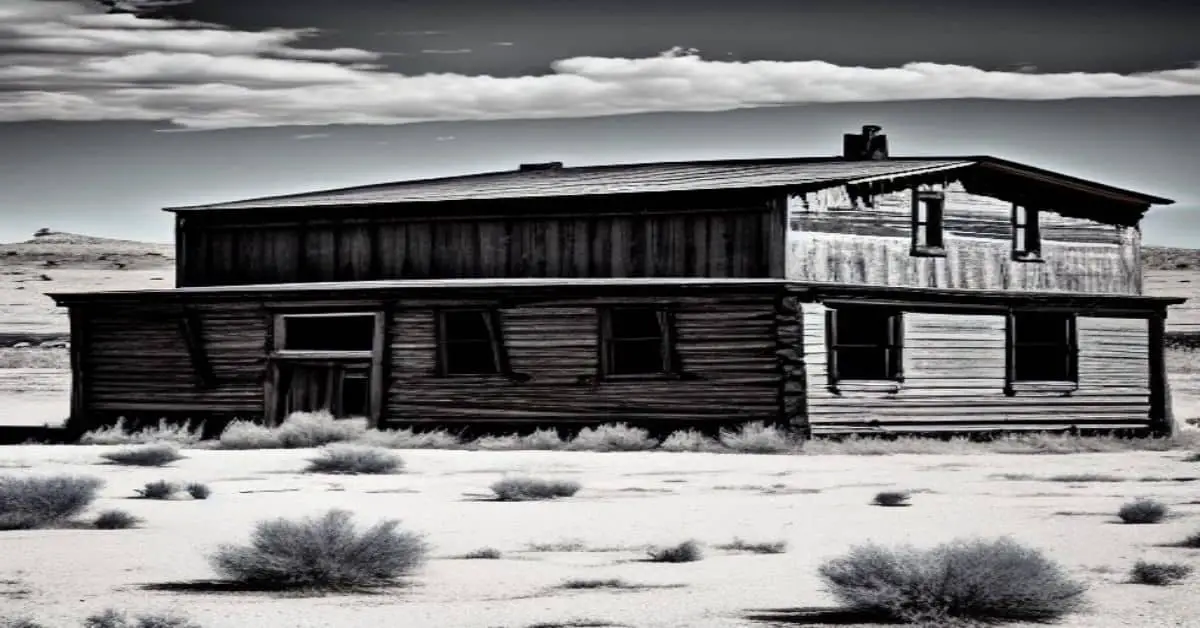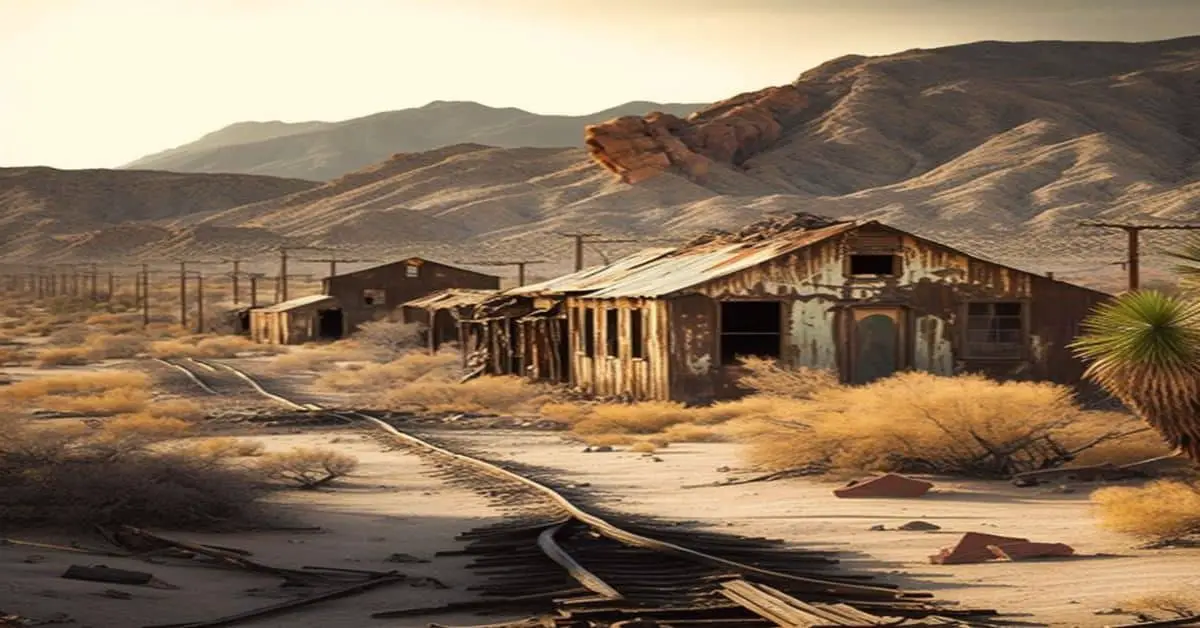Nestled in the rugged terrain of Arizona, Oro Blanco was once a thriving mining town that boasted of a population of over 200 residents, including some of the wealthiest people in the state. With the discovery of minerals like gold, silver, and copper, Oro Blanco quickly grew from a small camp to a bustling community that supported a variety of industries.
However, like many mining towns of the time, Oro Blanco’s fortunes declined rapidly, and the town soon became a ghost town, its buildings and artifacts standing as a testament to its past glory.
Today, Oro Blanco is being preserved by the descendants of its original settlers, who have managed to maintain the town’s remaining structures, including a headframe and part of a stamp mill. As visitors explore the town’s ruins, they can’t help but feel a sense of awe at the sheer scale of the development that once stood in its place.
In this article, we will delve into the history of Oro Blanco, starting with its location and settlement, then moving on to its mining and industrial achievements. Finally, we will look at the preservation efforts that have kept the town alive for generations.
Key Takeaways
- Oro Blanco was a mining town in Arizona that thrived for about 20 years while silver ore was extracted from the ground.
- The mining industry in Oro Blanco significantly contributed to the town’s economy and growth, but the labor conditions for miners were often dangerous and difficult.
- The town’s historical significance is being preserved through restoration efforts, including preserving the area’s headframe, stamp mill, and brick mine.
- Oro Blanco has significant tourism potential due to its ghostly appearance and unique geographical features.
Location and Settling
Oro Blanco, a ghost town settled near Ruby and had a post office, originated as a small camp that grew from a nearby mine. The mine was re-opened by a handful of miners in 1873 and the town thrived for about 20 years while silver ore was extracted from the ground using seven arrastras. The town had two steam mills and many arrastras, with the first town having more infrastructure than the second.
Despite the town’s remote location, it had a population of about 225, and even had a dentist. Early community life in Oro Blanco was centered around the mine and the extraction of silver ore. The town’s location in the Arizona desert provided a unique set of geographical features that had to be navigated by early settlers.
Education was a high priority in Oro Blanco, but no schoolhouse existed. The children studied in a three-sided, bush-roofed shack. Despite the challenges posed by the desert environment, the town thrived for about two decades before eventually becoming a ghost town.
Mining and Industry
The economic activities in the area during the town’s heyday were primarily centered around extracting precious metals from the ground. Prospectors used various techniques to find silver ore, including following veins, digging shafts, and using arrastras to crush the rock. Once the ore was extracted, it was processed using stamp mills and other machinery to separate the silver from the rock.
The labor conditions for miners in Oro Blanco were often dangerous and difficult, with long hours and little pay. Despite this, the town attracted a significant number of workers and entrepreneurs who were drawn by the promise of wealth and opportunity.
The mining industry in Oro Blanco was a significant contributor to the town’s economy and growth. The area was home to several mines, including one owned by James A. Robinson, the richest man in Arizona at the time. The mines used various methods to extract silver ore, including steam mills and arrastras.
The town’s population grew to around 225 residents at its height, with many of them working in the mining industry. Despite the dangers and challenges of mining, the industry was a vital part of Oro Blanco’s history and legacy.
Preservation and Future
Preserving the historical significance of the mining industry in Oro Blanco is an important aspect of maintaining the town’s legacy and ensuring its impact is not forgotten. Restoration efforts have been undertaken by the Noon family, descendants of the original settler, to keep the town’s buildings and structures in good condition.
The headframe and part of a stamp mill are still standing, and the brick mine in the area is also being preserved. The mine has a headframe and a shaft full of water, an interesting sight for visitors.
With its rich history and well-preserved structures, Oro Blanco has significant tourism potential. The town’s ghostly appearance adds to its appeal and attracts visitors interested in exploring its past. A video about Oro Blanco, which provides a glimpse into the town’s history, is available.
The town has a brick mine, which adds to its uniqueness and attracts tourists interested in exploring the mine’s history. Oro Blanco’s preservation efforts have ensured that the town’s legacy will remain remembered for many years.
Frequently Asked Questions
Ironically, social life in Oro Blanco revolved around the saloon culture and community gatherings despite the lack of a schoolhouse or church. The town had about 225 residents who mingled at the local saloon and attended dances and other events.
How did the town get its name?
The town of Oro Blanco got its name from the Spanish words “oro” meaning gold and “blanco” meaning white. The etymology suggests that the town was named after a nearby mine that produced white gold or silver. The naming process is unknown.
What was the impact of the silver mining industry on the environment?
The silver mining industry in Oro Blanco, Arizona, had negative environmental consequences, including deforestation, erosion, and water pollution. Sustainability initiatives were not a priority, resulting in long-term damage to the ecosystem.
Were there any notable events or incidents in Oro Blanco’s history?
Oro Blanco’s history was marked by the extraction of silver ore from the ground, which led to the town’s growth and the presence of notable figures such as James A. Robinson. However, no notable events or incidents such as natural disasters or political conflicts are mentioned in the text.
What is the current state of the roads and infrastructure leading to Oro Blanco?
The current state of the roads and infrastructure leading to Oro Blanco is unknown, as the text does not provide any information on this matter. The accessibility of the ghost town remains uncertain.


